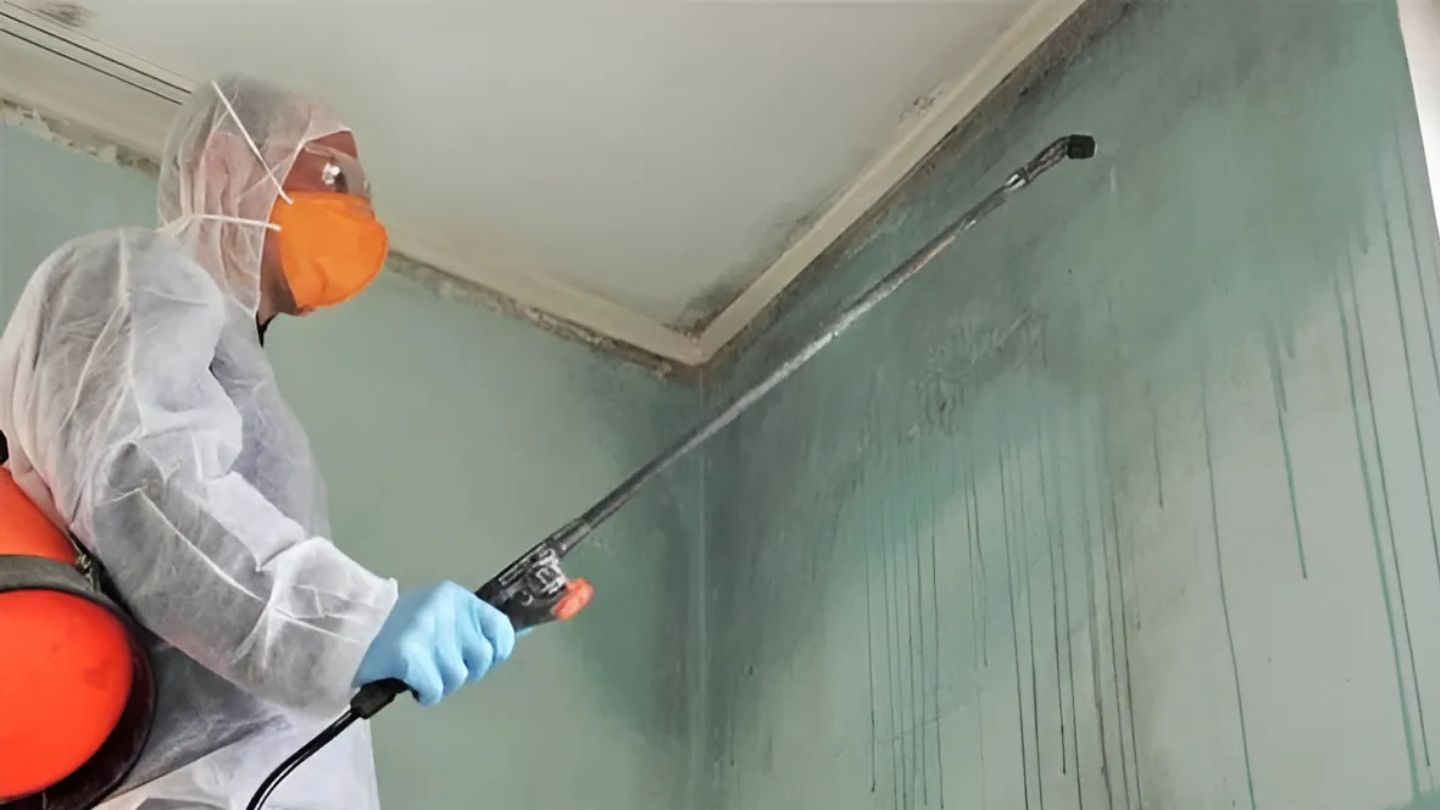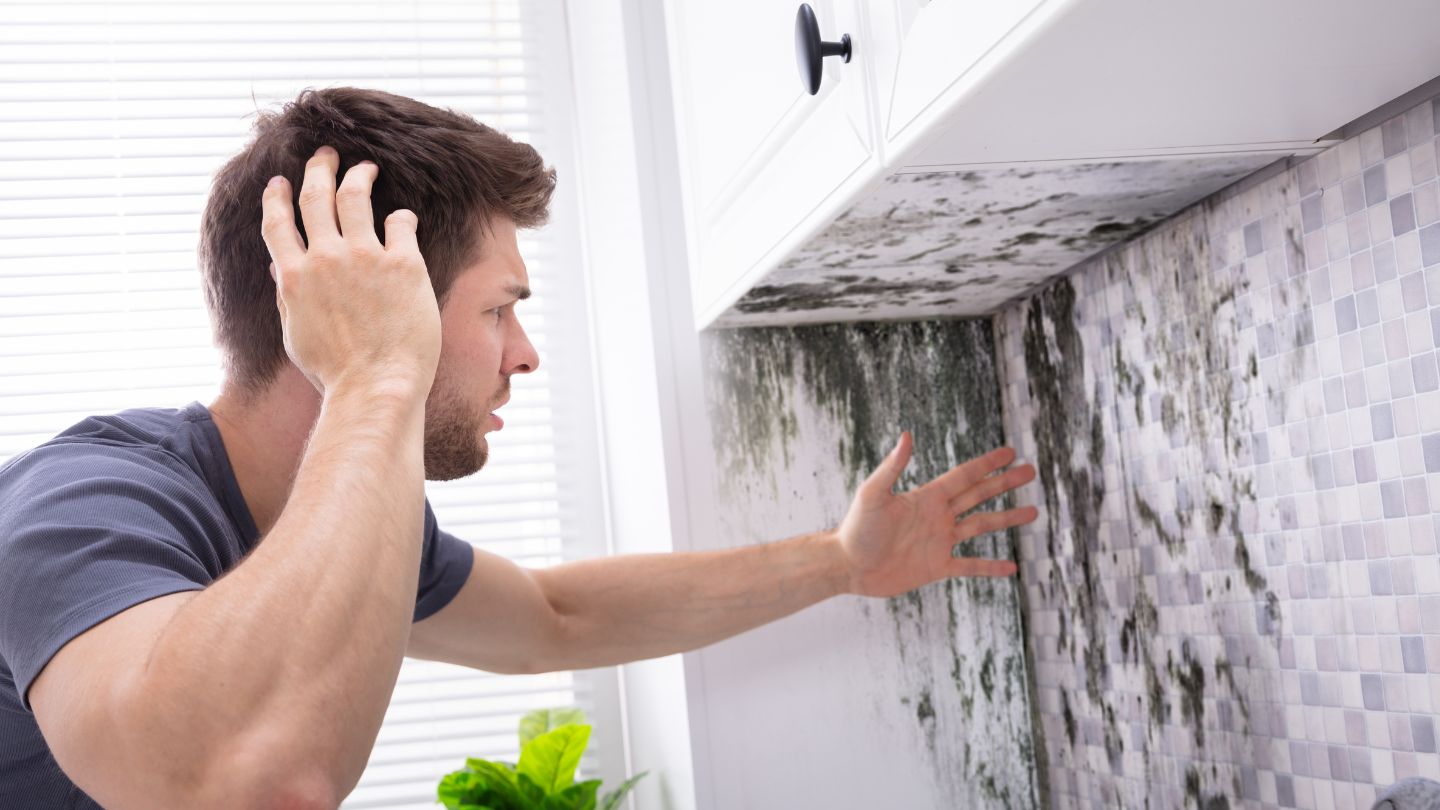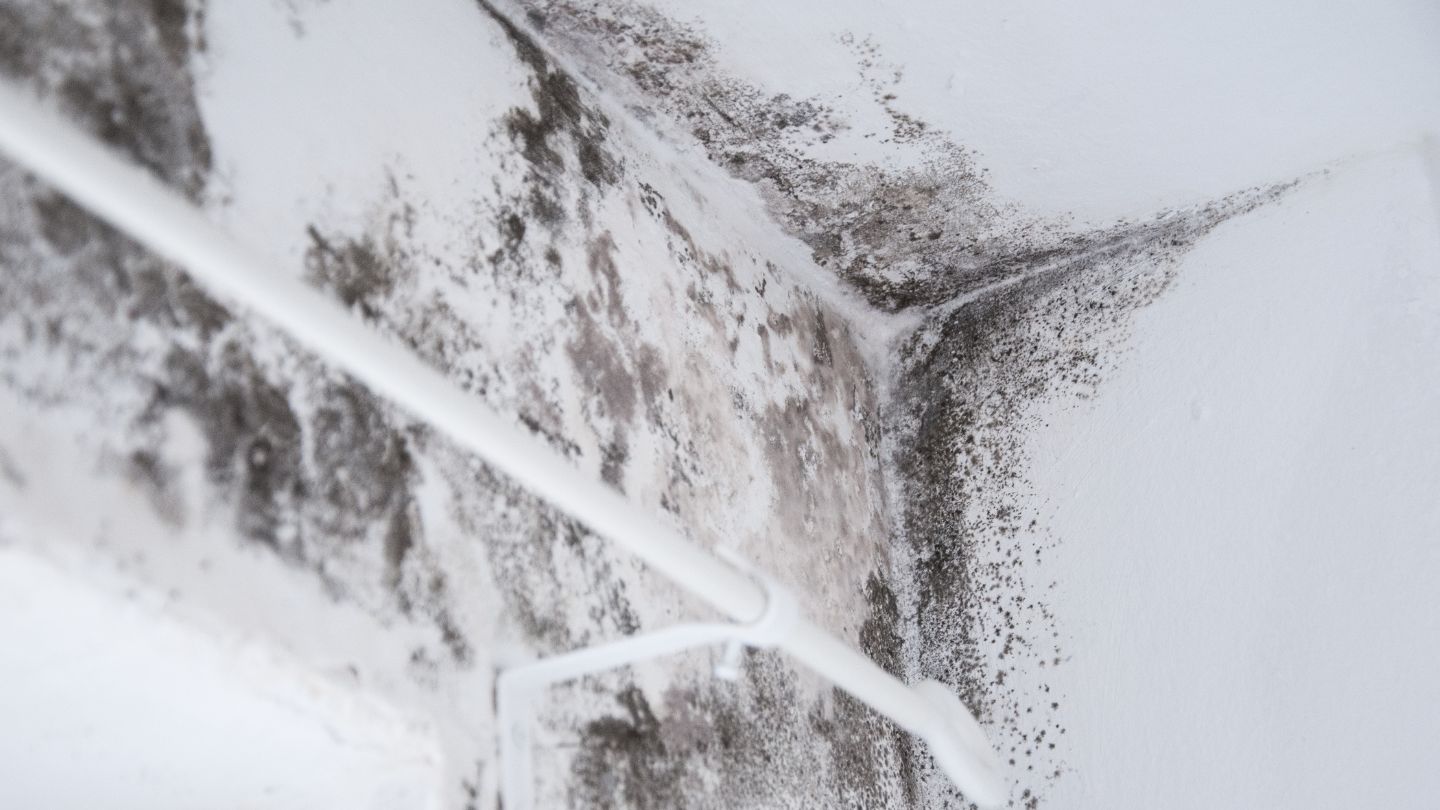When dealing with mold in your home, understanding the difference between mold remediation vs mold removal is crucial. Mold removal focuses on cleaning visible mold, while mold remediation tackles the underlying issues and prevents future outbreaks. This blog will explain both processes, helping you choose the right solution for effective mold management.
Key Takeaways
- Mold remediation involves comprehensive inspection and moisture control, addressing both mold and its underlying causes, while mold removal focuses solely on eliminating visible mold.
- Effective mold remediation reduces health risks associated with mold exposure by ensuring safe levels and preventing future growth through moisture management.
- Choosing a reputable mold remediation company is critical, as they provide expertise, specialized tools, and comprehensive solutions to prevent extensive property damage and health risks.
Understanding Mold Growth
Mold, a fungus variety, flourishes in moist settings and necessitates either water leakage or substantial humidity to propagate. It favors temperatures within the range of 77°F to 86°F, which renders warm and humid spaces especially susceptible to mold outbreaks. Mold can initiate its growth cycle within 24 to 48 hours following an incident of water invasion.
To inhibit the proliferation of mold and ensure the quality of indoor air is upheld, it’s essential to control interior moisture levels effectively. By maintaining indoor humidity under 60%, optimally around the bracket of 30% and 50%, one can markedly diminish the likelihood of encountering mold issues. Augmenting airflow by utilizing exhaust fans during cooking or showering helps eliminate additional moisture from your environment. Sealing any drafts near windows and entryways contributes as well to maintaining appropriate moisture balance indoors.
Consistent upkeep is paramount when combatting potential mold infestation. Early recognition through regular surveys for signs may curb extensive growth before it becomes problematic. Taking actionable measures such as rectifying dripping pipes, taps, along with conscientious gutter cleaning are beneficial tactics aimed at thwarting excess dampness accumulation around your dwelling, these practical steps ultimately contribute towards defending both home integrity and personal wellbeing against issues related to mold expansion.
What Is Mold Removal?
The process of mold removal entails the use of specific cleaning techniques and chemicals, such as bleach and ammonia, to physically eradicate mold from surfaces. This method primarily deals with the eradication of visible mold and may offer a temporary fix in terms of improving both looks and odor in areas impacted by mold. This approach does not resolve the fundamental causes that lead to the proliferation of mold.
Even though removing existing mold can diminish its immediate presence on surfaces, it’s not a definitive cure. If moisture problems aren’t resolved, there is a high likelihood that molds will reemerge swiftly. It’s also important to note that complete extermination of all spores isn’t feasible. Managing them down to acceptable levels is what’s achievable.
While eliminating existing surface-level molds holds importance within remediation strategies, it falls short when considered an isolated solution for enduringly controlling or preventing Infestations without concurrent efforts directed at mitigating the underlying moisture issues causing fungal growth.
What Is Mold Remediation?
Mold remediation encompasses more than merely eradicating visible mold. This thorough process involves both a careful inspection to ascertain the full scope of mold proliferation and strategies for moisture management, along with eliminating the existing mold. It targets not just the presence of mold, but also its fundamental causes, striving to restore normal levels of mold and safeguarding the living space for those who inhabit it.
During an in-depth examination phase, specialists scrutinize both overt and covert instances of a potential mold outbreak while pinpointing sources that contribute to excess humidity within the property. A vital aspect throughout every stage of remediation is controlling indoor humidity—crucial for mitigating spore dispersal as well as averting new growth.
Ultimately, successful outcomes from molding remediation hinge on thoroughly addressing underlying moisture issues alongside removing current infestations—thereby preventing recurrence and ensuring residents are housed in conditions conducive to their wellbeing. The objective is a durable resolution rather than mere short-term fixes when dealing with problems related to molds.
Key Differences Between Mold Removal and Mold Remediation

Grasping the distinction between mold removal and mold remediation is essential for effectively tackling mold problems. The process of removing mold typically involves eradicating visible signs of mold using chemical agents or cleaning methods. This approach does not confront the fundamental cause behind the growth of the mold, leaving room for its likely reappearance.
Conversely, a comprehensive strategy known as mold remediation seeks to maintain safe levels of indoor air quality by curtailing and managing fungal proliferation while simultaneously addressing underlying moisture issues that contribute to these conditions. This multifaceted method encompasses several steps:
- Detection of where the issue originates
- Sealing off affected areas
- Eradication procedures
- Sanitation efforts
- Deterrence measures
In concentrating on sustainable resolutions, both mitigation and remediation offer more durable results than simply removing visible fungus spots—resulting in an environment that is healthier and better safeguarded against future invasions by unwanted molds.
Health Risks of Mold Exposure

Being exposed to mold can result in significant health dangers, including issues with breathing and allergic responses. Typical signs of an allergy to mold include sneezing, blocked nose, irritated or watery eyes, as well as skin irritation. For those suffering from asthma or other conditions that affect the respiratory system, being exposed to mold can intensify symptoms and cause serious complications.
Among the more grave health risks linked to exposure to mold is hypersensitivity pneumonitis. This condition triggers inflammation in the lungs along with symptoms similar to flu. Continuous inhalation of airborne spores may lead to lasting diseases related to breathing and could even permanently damage the lungs. It’s crucial for one’s wellbeing that any incidence of a mold issue is addressed quickly and efficiently.
To circumvent these severe risks associated with your well-being requires thorough remediation efforts focused on removing both present levels of mold and its root causes – ensuring low concentrations of this fungus are maintained while safeguarding against potential harm it poses to individuals’ health.
The Mold Remediation Process

Initiating the mold remediation process requires an exhaustive inspection and assessment to gauge the severity of the mold issue. This step entails pinpointing the moisture source that’s promoting mold proliferation. When areas affected by mold are identified, specialists proceed to seal off these contaminated zones to hinder the dispersion of mold spores into clean regions.
The actual cleaning phase involves applying specialized agents formulated for eradicating mold and responsibly disposing items like drywall or insulation that have been tainted by contamination. It is imperative during this phase to ensure complete removal of all traces of mold in order for the space in question to be considered secure for its intended future use.
To validate a successful remediation effort, post-cleanup verification tests are conducted with clearance testing serving as confirmation that it is indeed safe again to inhabit or utilize the area prior to any reconstruction activities. By following such comprehensive measures, professional services provide an effective resolution when tackling problems related to a stubbornly persistent foe: Mold.
Professional Mold Remediation Services
Engaging professional mold remediation services brings the advantage of skilled expertise for efficiently resolving mold complications. A commendable mold remediation company invests in comprehensive training for its workforce, securing both high-quality outcomes and safety during the process of eradication. These professionals employ specialized equipment and methodologies to achieve successful mold removal while curtailing potential dispersion of spores.
Opting for professional intervention can lead to cost savings over an extended period by averting significant property damage and eliminating the need for repetitive treatments. Experts in mold remediation not only work towards maintaining a building’s structural soundness, but also prioritize safeguarding its inhabitants’ health.
Throughout the course of addressing a mold issue, specialists equip themselves with protective attire as a precautionary measure against contact with hazardous spores. This cautious approach assures that all stages of the remedy are managed securely and proficiently, providing homeowners reassurance about their decision to rely on expert services—a strategic choice conducive to enduring management and abatement of molds.
Preventing Future Mold Growth
To avert the recurrence of mold growth, it’s crucial to tackle the moisture problems at the root of the original mold issue. Experts in remediation can offer indispensable guidance on how to sustain an environment devoid of mold, focusing on adequate airflow and managing humidity levels. Consistent monitoring for leaks, repairing them promptly, and controlling indoor humidity are essential strategies in preventing the Development of mold.
Adhering to these preventative steps significantly diminishes the likelihood of enduring additional bouts with mold infestations. Seeking professional advice coupled with regular upkeep is instrumental in maintaining a living area that remains healthy and free from mold.
Choosing the Right Mold Remediation Company
Choosing an appropriate mold remediation company is essential for the successful resolution of mold problems. Verifying the credibility and practical experience of a company can provide assurance about its dependability. It’s equally vital to determine whether they offer round-the-clock emergency services and cover your area, given that prompt action is key in dealing with mold.
It is advisable to request clear pricing details and a comprehensive plan for the project beforehand, which helps prevent unanticipated expenses during the course of remediation. Examining customer feedback and asking for references are instrumental in assessing a firm’s historical track record and consistency in delivering quality service. Homeowners who consider these aspects will be well-equipped to select a reputable and efficient provider for their mold remediation needs.
How 911 Floods R Us Can Help
Understanding the difference between mold remediation and mold removal is key to managing mold problems effectively. While removal focuses on eliminating visible mold, remediation addresses the root cause, ensuring a thorough and lasting solution. Choosing the right approach protects your property and reduces health risks associated with mold exposure.
We offer comprehensive mold remediation services that prioritize both prevention and restoration. At 911 Floods R Us, our team is equipped with advanced techniques to identify and tackle mold at its source, ensuring a safe and healthy environment. If you’re searching for mold remediation in Buford, trust us to guide you through every step of the process with professionalism and care, restoring your property and peace of mind.
Frequently Asked Questions
What is the difference between mold removal and mold remediation?
Mold removal targets the elimination of visible mold, whereas mold remediation involves addressing the root causes and implementing measures for long-term prevention.
How does mold exposure affect health?
Mold exposure can significantly impact your health, causing respiratory problems, allergic reactions, and potentially serious conditions such as hypersensitivity pneumonitis.
It’s important to address mold issues promptly to protect your well-being.
What should I look for in a mold remediation company?
When choosing a mold remediation company, prioritize their reputation, experience, customer reviews, and the services they offer, including emergency support and transparent pricing.
These factors will help ensure you receive effective and reliable service.

